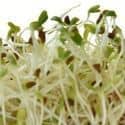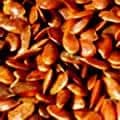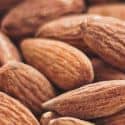Plant Foods Highest in Protein per Net Carb

Adopting a plant-based diet is gaining in popularity, not just for ethical reasons, but also for environmental sustainability, and health reasons. (1) At the same time, many people are adopting diets that limit their intake of carbohydrates, such as 'keto' or 'eco-Atkins' diets.
Low-carb diets are typically high in protein, as they often involve relatively high meat consumption. However, those following a low-carb plant-based diet may be concerned about getting enough nutrients, especially protein. There are many great plant sources of protein available that also have low net carbs.
The standard daily value (DV) for protein is 50 grams per day, but you may require more or less depending on your weight and activity level. (2)
The high protein plant foods below are ranked by protein to net carb ratio. High protein plant foods that are low in net-carbs include soy foods, leafy greens, nuts, seeds, and sprouts. For more ideas, see the complete ranking of 200 vegan foods highest in protein per net-carb.
List of High Protein Plant Foods per Net Carbs
 1 Firm Tofu
1 Firm Tofu| Protein per Cup | Protein per 100g |
|---|---|
| 43.5g (87% DV) | 17.3g (35% DV) |
Note: The amount of protein in tofu can range between 4.8g (10% DV) to 17.3g (35% DV) per 100 gram serving (or a little less than 1/2 cup). See the nutrition comparison of 10 common tofu brands.
To find more, use the detailed nutrient ranking of all vegan foods high in protein.
 2 Alfalfa Sprouts
2 Alfalfa Sprouts| Protein per Cup Raw | Protein per 100g |
|---|---|
| 1.3g (3% DV) | 4g (8% DV) |
 3 Flax Seeds
3 Flax Seeds| Protein per Oz | Protein per 100g |
|---|---|
| 5.2g (10% DV) | 18.3g (37% DV) |
 4 Boiled Soybeans (Edamame)
4 Boiled Soybeans (Edamame)| Protein per Cup | Protein per 100g |
|---|---|
| 31.3g (63% DV) | 18.2g (36% DV) |
 5 Hemp Seeds
5 Hemp Seeds| Protein per Oz | Protein per 100g |
|---|---|
| 9g (18% DV) | 31.6g (63% DV) |
 6 Seeds (Squash and Pumpkin Seeds)
6 Seeds (Squash and Pumpkin Seeds)| Protein per 1oz Handful | Protein per 100g |
|---|---|
| 8.5g (17% DV) | 29.8g (60% DV) |
 7 Brazil Nuts
7 Brazil Nuts| Protein per 1 Oz Handful | Protein per 100g |
|---|---|
| 4.1g (8% DV) | 14.3g (29% DV) |
 8 Tempeh
8 Tempeh| Protein per Cup | Protein per 100g |
|---|---|
| 33.7g (67% DV) | 20.3g (41% DV) |
 9 Almonds
9 Almonds| Protein per 1oz Handful | Protein per 100g |
|---|---|
| 6g (12% DV) | 21.2g (42% DV) |
 10 Unsweetened Soymilk
10 Unsweetened Soymilk| Protein per 16oz Glass | Protein per 100g |
|---|---|
| 14g (28% DV) | 2.9g (6% DV) |
 11 Spinach
11 Spinach| Protein per Cup Cooked | Protein per 100g |
|---|---|
| 5.3g (11% DV) | 3g (6% DV) |
 12 Peanuts (Dry Roasted)
12 Peanuts (Dry Roasted)| Protein per Oz | Protein per 100g |
|---|---|
| 6.9g (14% DV) | 24.4g (49% DV) |
About the Data
Data for the curated food lists comes from the USDA Food Data Central Repository.
You can check our data against the USDA by clicking the (Source) link at the bottom of each food listing.
Note: When checking data please be sure the serving sizes are the same. In the rare case you find any difference, please contact us and we will fix it right away.
About Nutrient Targets
Setting targets can provide a guide to healthy eating.
Some of the most popular targets include:- Daily Value (%DV) - The daily value (%DV) is a general guideline for consumption that will prevent deficiency of a particular nutrient in most people. The %DV refers to the percentage of an amount that's found in a single serving of a food. It also accounts for absorption factors. It is set by the U.S. FDA.
- Recommended Dietary Allowance (%RDA) - The RDA sets an average daily dietary intake level that is sufficient to meet the nutrient requirements of nearly all (97.5%) healthy individuals. It's more specific than the daily value, and varies by age and gender. The RDA is set by the US National Instutites of Health.
- Reference Dietary Intake (%RDI) -The reference dietary intake is similar to the recommended daily allowance, but is specific to age and gender. The RDI for amino acids is set by the U.N. World Health Organization.
- Adequate Intake (%AI) - This value is primarily used in reference to omega-3 and omega-6 fats. The Adequate Intake is set by the U.S. Institute of Medicine. Because there is less evidence to determine the ideal targets for consumption of these nutrients, the specific amount is considered to be less reliable. Using the term Adequate Intake, rather than one of the other terms, helps to emphasize that the ideal intake of that particular nutrient has not yet been scientifically determined.
See the Guide to Recommended Daily Intakes for more information.
Want to set your own targets? Sign up for an account and set custom targets in the daily meal planner.From the Nutrient Ranking Tool
Use the ranking tool links below to select foods and create your own food list to share or print.
- Foods High in Protein
- Foods Low in Protein
- Vegetables High in Protein
- Fruits High in Protein
- Vegetarian Foods High in Protein
- Nuts High in Protein
- Grains High in Protein
- Beans High in Protein
- Dairy High in Protein
- Breakfast Cereals High in Protein
- Fast Foods High in Protein
View more nutrients with the nutrient ranking tool, or see ratios with the nutrient ratio tool.
Related
Data Sources and References
- Corrin T, Papadopoulos A. A Look at Plant-Based Diets Appetite. 2017 Feb 1;109:40-47. doi: 10.1016/j.appet.2016.11.018. Epub 2016 Nov 18. 27871943
- U.S.FDA - Daily Value on the New Nutrition and Supplement Facts Labels
- U.S. Agricultural Research Service Food Data Central
Try the recipe nutrition calculator, or daily meal planner.
Create a free account to log and track foods.

